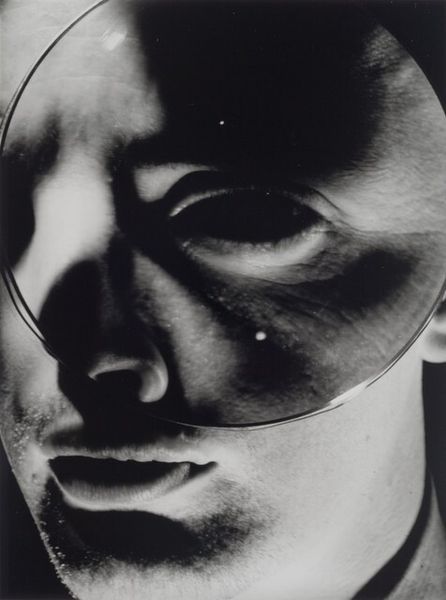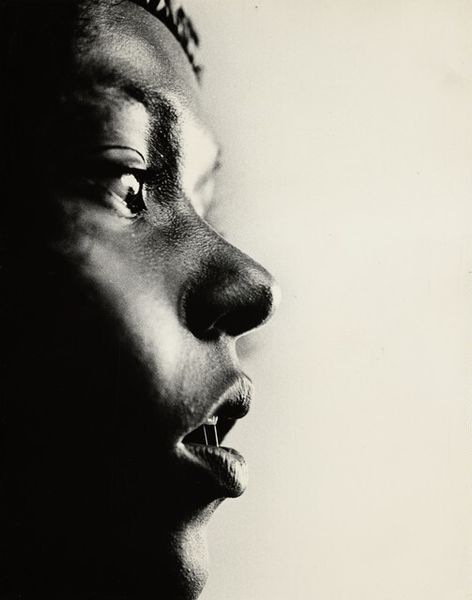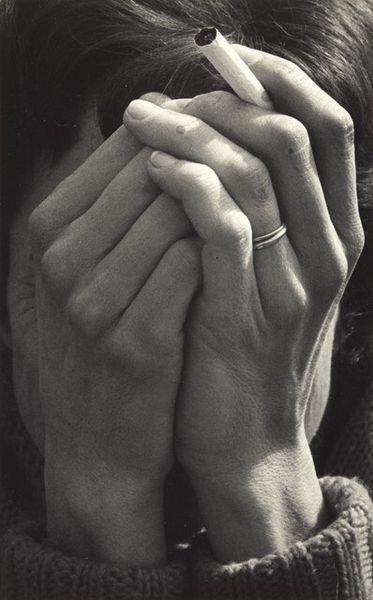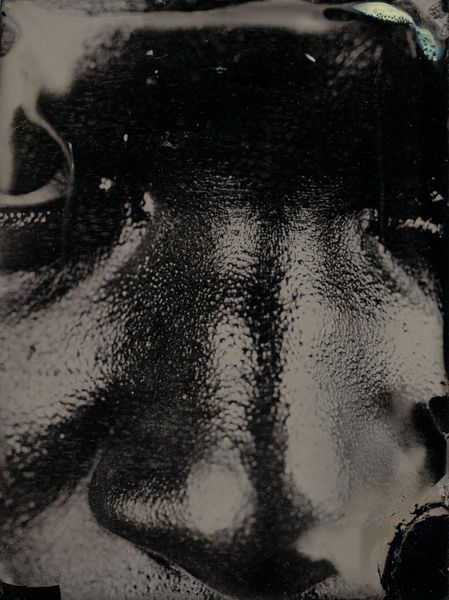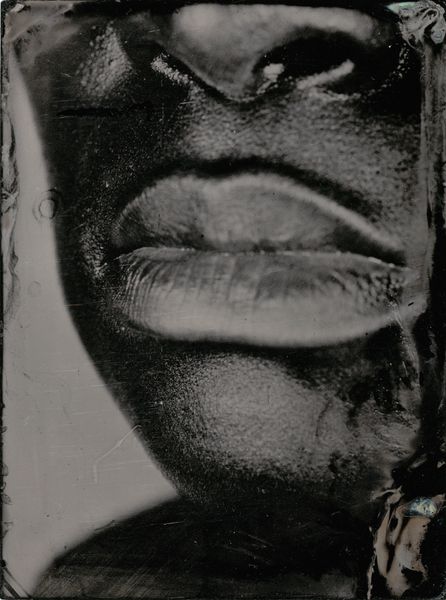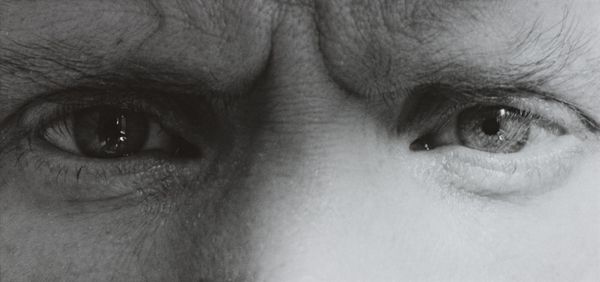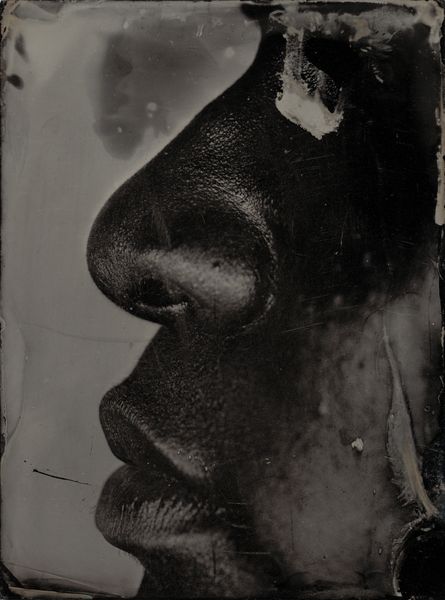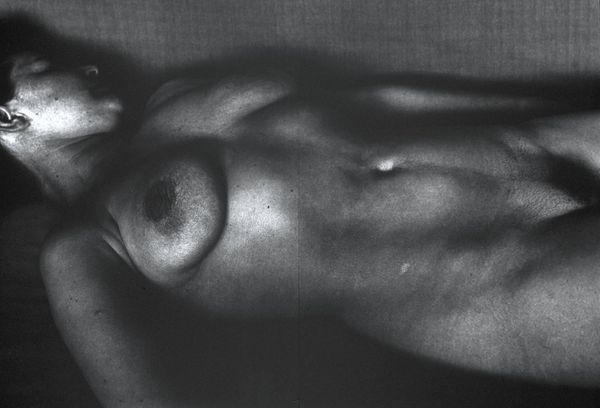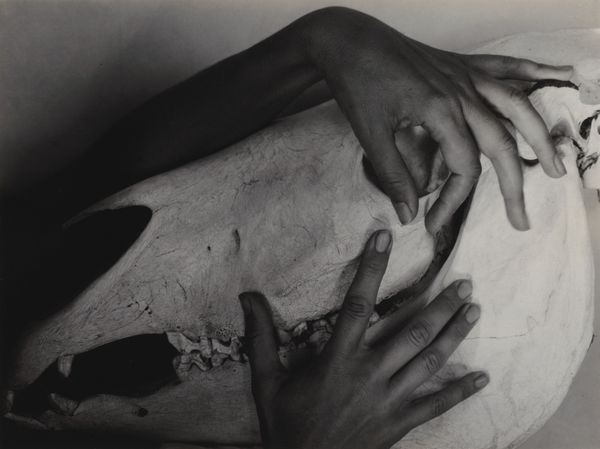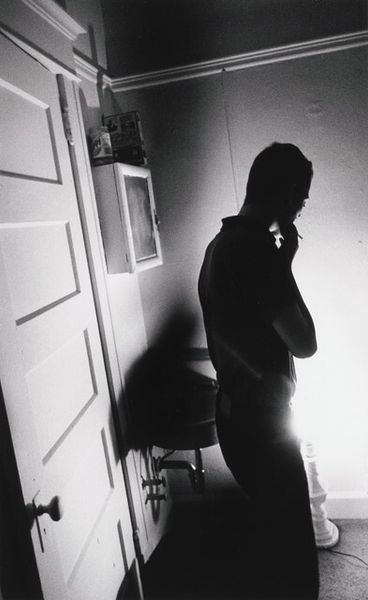
photography, gelatin-silver-print
#
portrait
#
self-portrait
#
conceptual-art
#
portrait
#
photography
#
black and white
#
gelatin-silver-print
#
modernism
Dimensions: image: 8.8 x 11.4 cm (3 7/16 x 4 1/2 in.) mount: 8.9 x 11.4 cm (3 1/2 x 4 1/2 in.)
Copyright: National Gallery of Art: CC0 1.0
Editor: Here we have Peter Campus’s “Untitled” photograph from 1978, a gelatin-silver print. It's strikingly intimate, a very close-up self-portrait, I think, but there's something unsettling about the hand obscuring the face. What symbols or readings do you draw from it? Curator: Indeed, the obscuring hand is potent. Think of hands in art history - blessing, labor, supplication. Here, it veils, it hides. Do you get a sense of why? What historical understanding of identity in art might be helpful? Editor: I'm guessing this comes down to the gaze. The single visible eye stares right at you, and I’m tempted to read some idea about hiding as a reaction to being perceived… Curator: Exactly. In the '70s, conceptual artists deeply questioned representation. Is this merely a portrait, or an interrogation of self-perception? The partial obscuration reminds me of mourning veils – another cultural symbol. It creates both revelation and concealment. Does this remind you of any classic artworks or popular motifs? Editor: It has echoes of photography about trauma – but I'm wondering why make that connection? The picture is very cool in its aesthetic approach. I am missing something about historical self-expression! Curator: Let’s not disregard your intuition! Consider the psychological implications: fragmented identity, the desire to control one’s image in a world increasingly mediated. It speaks to deeper, possibly hidden, anxieties. So trauma resonates, as a symbol and as lived experience. Editor: So, it's both about the self being fractured by observation, and by personal, hidden anxieties and experience – a duality reflected in light and dark. It's more complicated than I first assumed! Curator: Precisely. Visual symbols rarely hold singular meanings. It is through these multiple layers of meaning we see the artist struggling with historical, cultural, and emotional symbols.
Comments
No comments
Be the first to comment and join the conversation on the ultimate creative platform.
